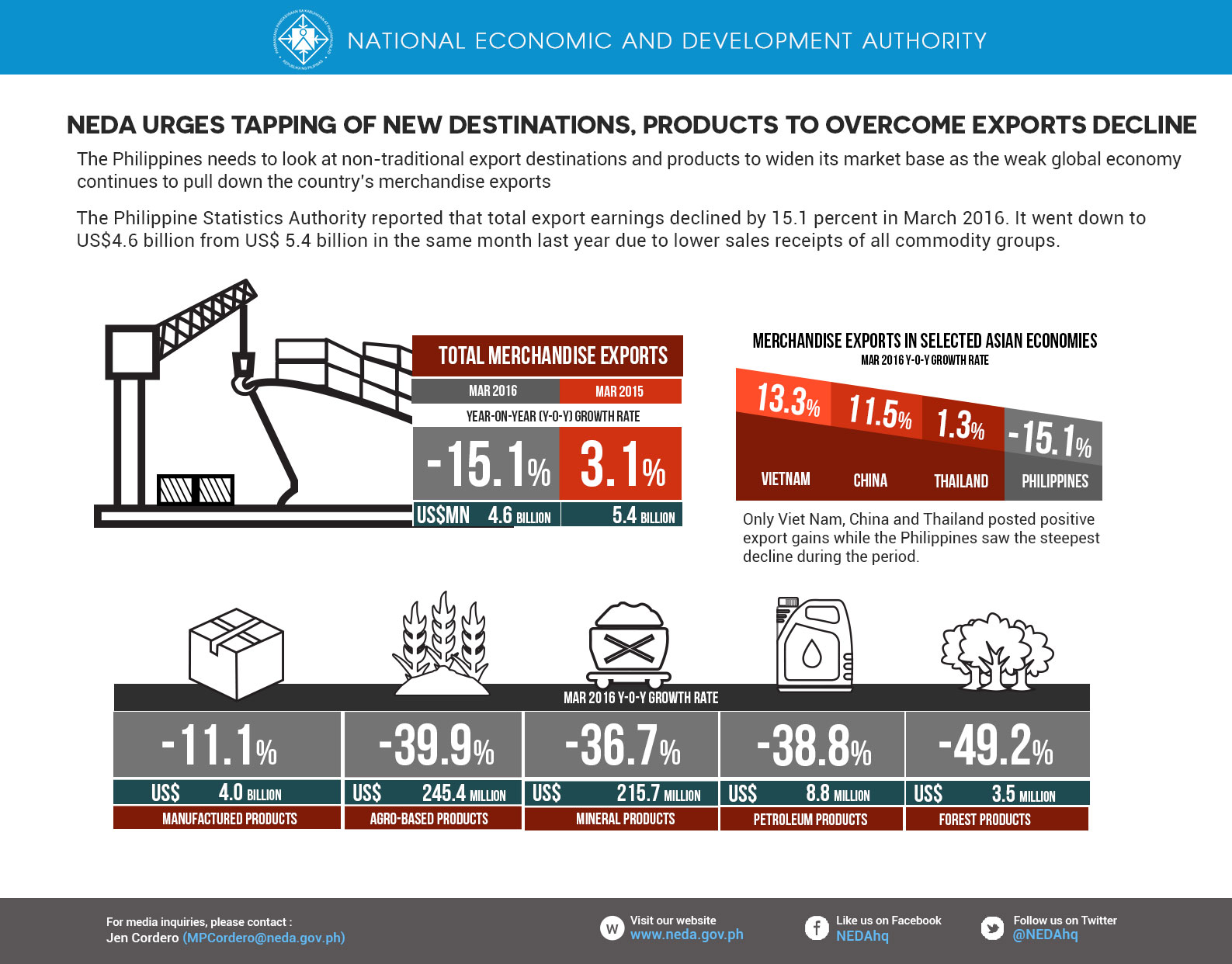
The Philippines needs to look at non-traditional export destinations and products to widen its market base as the weak global economy continues to pull down the country’s merchandise exports, according to the National Economic and Development Authority (NEDA).
The Philippine Statistics Authority reported today that total export earnings declined by 15.1 percent in March 2016. It went down to US$4.6 billion from US$ 5.4 billion in the same month last year due to lower sales receipts of all commodity groups.
The country’s merchandise exports is on its 12th consecutive month of decline since April 2015.
“It’s a necessary step in the midst of a challenging global economy. The country’s traditional trade partners continue to post subdued growth, global trade is not expected to pick up soon, and China’s slowdown is impinging upon overall growth in emerging economies,” said Socioeconomic Planning Secretary Emmanuel F. Esguerra.
Among 11 selected Asian economies, only Viet Nam, China and Thailand posted positive export gains while the Philippines saw the steepest decline during the period. Lower revenues from several major trading partners also dragged exports in March 2016.
“To be able to reach out to other potential export markets and sell our products, it is crucial to ease government regulation and strengthen market intelligence gathering in partnership with the private sector. We also need to maximize the opportunities in trade agreements and economic groupings particularly within the ASEAN region,” the Cabinet official said.
For the first quarter of 2016, exports amounted to US$13.1 billion, 8.4 percent lower than the US$14.3 billion registered last year.
“Given the growth of merchandise exports in the first quarter, the Philippines needs to grow by at least 8.3 percent in the next three quarters to attain the low-end projection of the Export Development Council of 5.4 percent in 2016,” said Esguerra, who is also NEDA Director-General.
Meanwhile, in March 2016, total earnings from manufactured products dropped by 11.1 percent to reach US$4.0 billion from US$4.5 billion in the same period last year.
“This is a reflection of a general slowdown in the global manufacturing sector. On the upside, wood manufactures, and iron and steel posted positive growth rates in March 2016. Electronic exports also reached its tenth consecutive month of positive growth during the period,” said Esguerra.
In the short to medium term, he said it is important to promote industry and national competitiveness by crafting policies to move domestic industries into higher-value niches in the global value chain (GVC), and inducing multinational enterprises, which are lead firms in the GVCs, to locate in the country.
–END–



